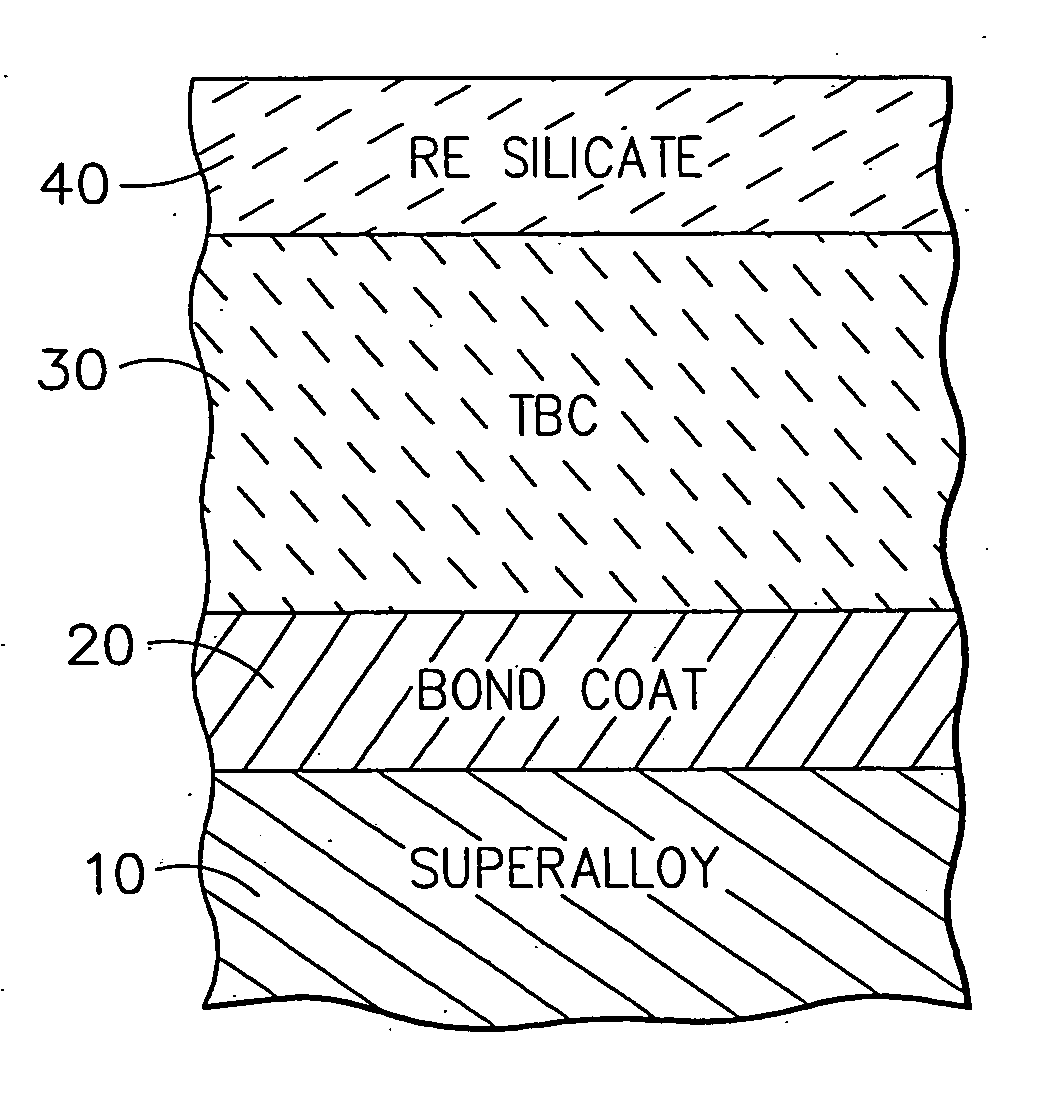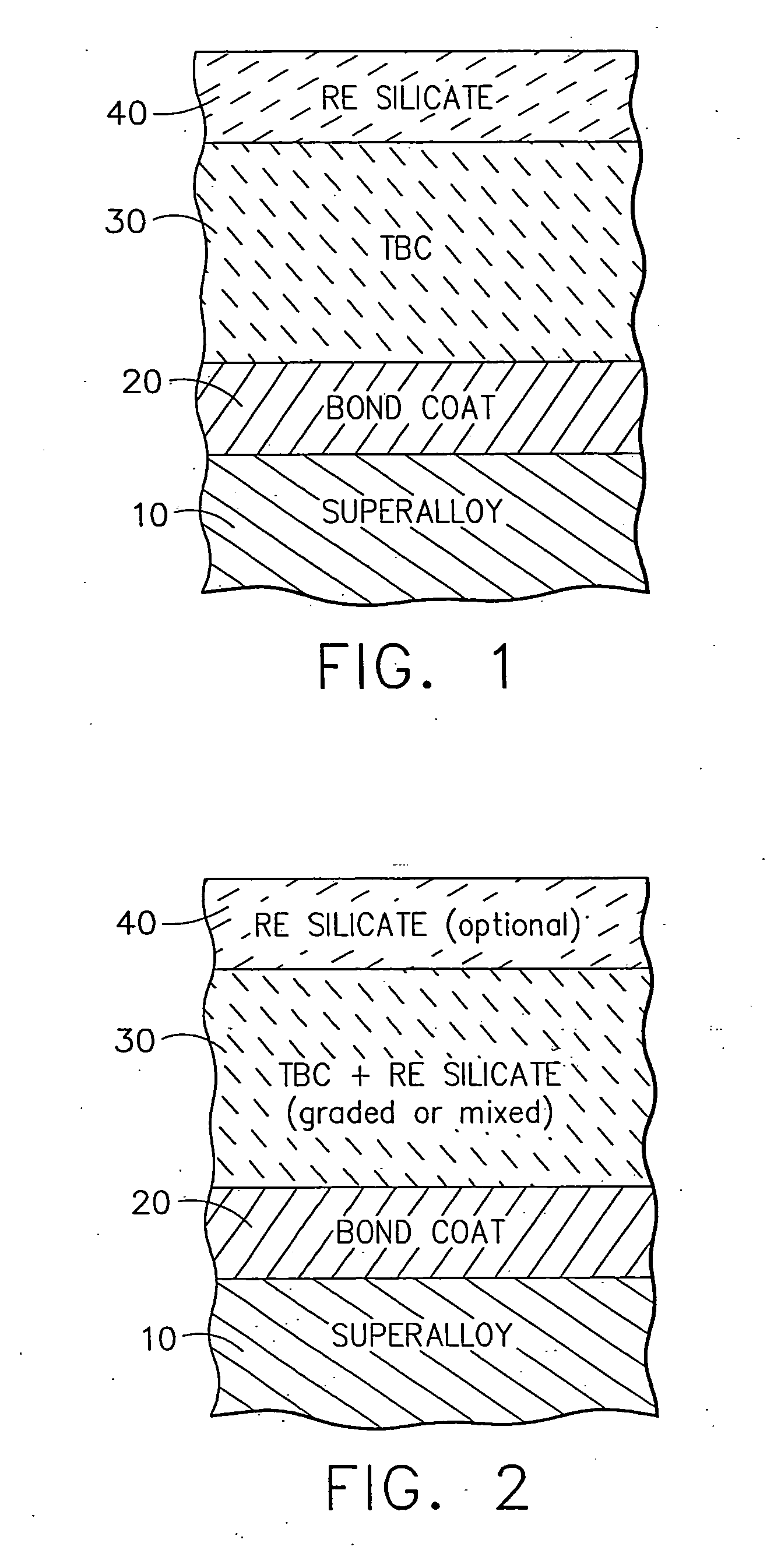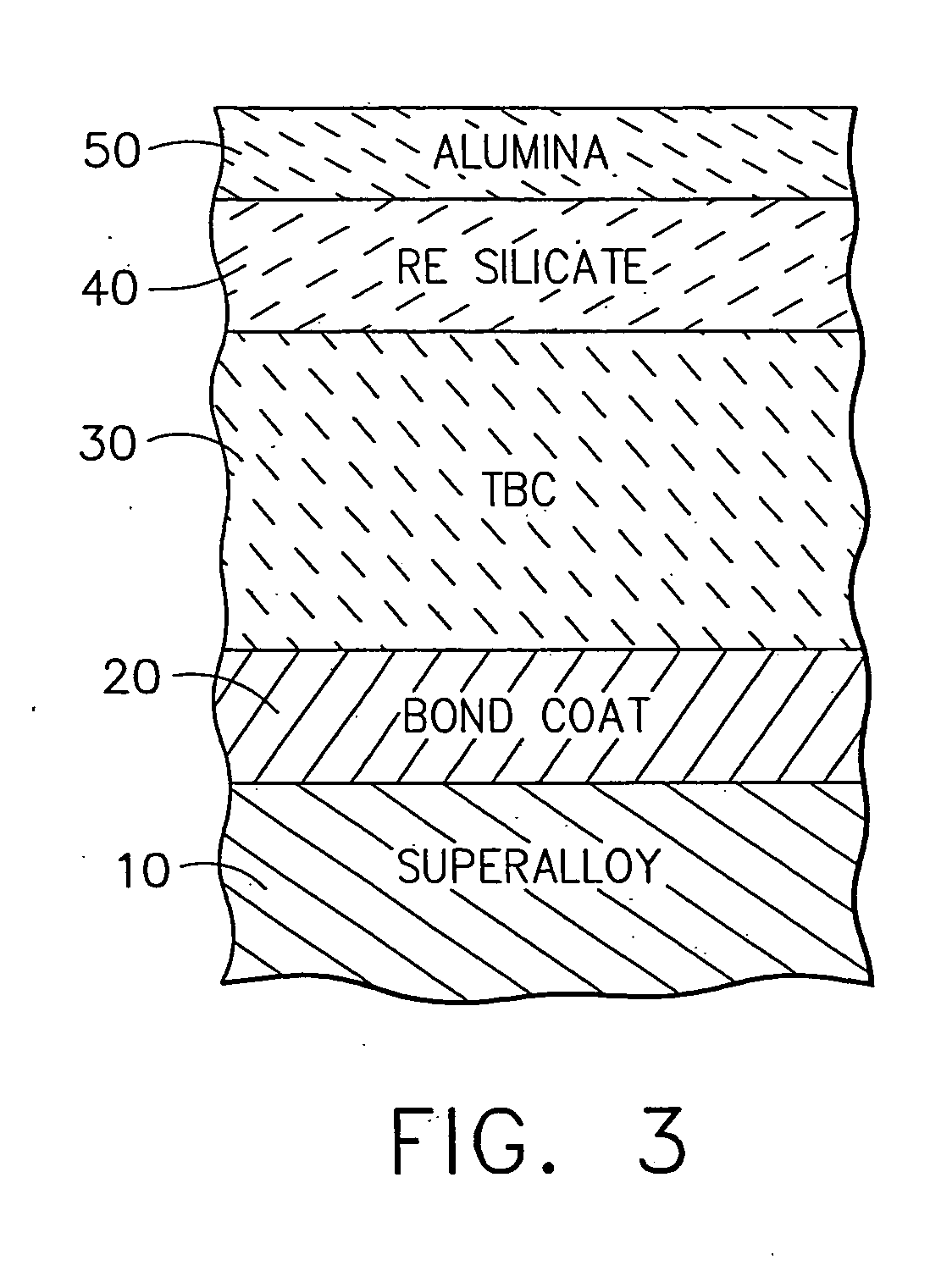Protection of thermal barrier coating by impermeable barrier coating
a technology of impermeable barrier and thermal barrier coating, which is applied in the direction of superimposed coating process, machines/engines, transportation and packaging, etc., can solve the problems of insufficient mechanical properties, insufficient mechanical properties of base alloy alone, and increased high temperature durability of engine components, so as to prevent infiltration of contaminant composition
- Summary
- Abstract
- Description
- Claims
- Application Information
AI Technical Summary
Benefits of technology
Problems solved by technology
Method used
Image
Examples
example
[0043] To evaluate the potential for using an impermeable barrier coating, Sc2SiO5 material was hot pressed and sintered into a free standing ceramic pellet. The Sc2SiO5 was tested in thermal exposure at about 1315° F. (2400° C.) (FIG. 4) for about 50 hours with ˜80 mg / in2 CMAS overlaying the surface.
[0044] This Sc2SiO5 material was then compared with free standing 9.5 wt % yttria stabilized zirconia (YSZ) samples. Shown in FIG. 5 and FIG. 6 are the thermal exposure attack of the YSZ samples at about 1232° F. (2250° C.) for about 16 hours with ˜80 mg / in2 CMAS overlaying the surface and 1343° C. (2450° F.) for about 16 hours with ˜80 mg / in2 CMAS overlaying the surface. As can be seen from a comparison of the figures, this example advantageously demonstrates the lack of material loss for the Sc2SiO5 sample demonstrating the strong resistance to environmental attack as compared with YSZ.
PUM
| Property | Measurement | Unit |
|---|---|---|
| operating temperatures | aaaaa | aaaaa |
| weight percent | aaaaa | aaaaa |
| melting point | aaaaa | aaaaa |
Abstract
Description
Claims
Application Information
 Login to View More
Login to View More - R&D
- Intellectual Property
- Life Sciences
- Materials
- Tech Scout
- Unparalleled Data Quality
- Higher Quality Content
- 60% Fewer Hallucinations
Browse by: Latest US Patents, China's latest patents, Technical Efficacy Thesaurus, Application Domain, Technology Topic, Popular Technical Reports.
© 2025 PatSnap. All rights reserved.Legal|Privacy policy|Modern Slavery Act Transparency Statement|Sitemap|About US| Contact US: help@patsnap.com



